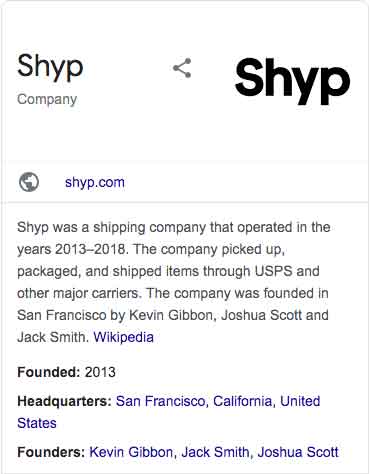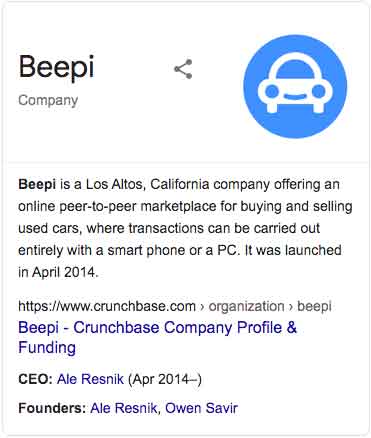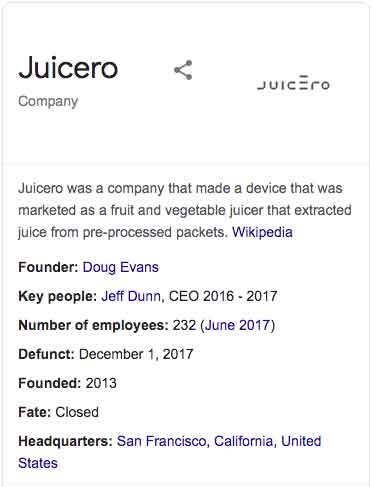Show:
5 Failed Tech Startups and the Lessons Learned
Some of the best success lessons come from failure by other people. It would feel like cutting a path through the wilderness for others to follow. The mushrooming of tech startups in the last two decades has left a lot of lessons for future entrepreneurs. By learning from the failures of other entrepreneur, you avoid falling into the trap of the 92% of startups that do not turn up to be successful businesses.

Startups fail for many reasons. One of them is that their developers are in college and, therefore, lack the experience as well as time to run a successful business. If you are running a business while in college or are worried about your grades as you turn to entrepreneurship, hire professional coursework assistance. You will keep your eyes on the business without failing in academic pursuit.
Each startup has a story about its success or failure. It means that the failure of one startup comes with a different lesson. Here are 5 lessons from startups about success and failure in business.
1. Shyp – There is nothing like ‘Growth at All Cost!’
The startup became popular for its promise of easy shipping across the world. Their model of business was to allow anyone to deliver any package around the world in just two clicks. It meant so much for people trading across states and continents. So much peace of mind and simplicity in the logistics industry!

In just three months, the company had received favorable coverage from the leading media in the USA. Investors came trooping with $62.1million in capital. That is what it meant for the company to address one of the greatest logistics pain points. It was ranked among such other startups as Uber that was gaining traction across the world.
However, the bubble burst as soon as the deal was signed. The numbers were impressive at the beginning, causing the founders to remain fixated. In the process of being fixated on the promised numbers, the volume of trade was declining. Executives went looking for more capital instead of revising their strategy. The mentality of growth at all brought down one of the most promising logistics companies.
Hyper inflated metrics ate Shyp. Investors learned to focus on daily customer acquisition. They failed to re-strategize once the bubble burst.
2. Beepi – Good Idea Bad Execution, Money does run out.
Beepi entered the market as a sales yard for used vehicles. The future looked so bright that it attracted capital funding worth more than $149 million. The excitement over the money cost them one of the most brilliant ideas. Executives were earning millions and eating into profits in the process. They created private executive offices with sofas worth $10,000.

The executives micromanaged the business and were quick to negotiate higher valuations. In the process of micromanaging the company, the leaders did not allow the workers to learn. Trouble started when a Chinese investor pulled out. Beepi had to send more than 180 staff members home. Luxurious life ate into their funding, causing it to merge with another company in the process. Investors asked for refunds, pushing the startup into more debt.
3. Juicero – Test Product Before Hitting the Market
Doug Evans promised a juice maker that would transform how people squeeze juice at home. It promised speed and more juice in your glass. What’s more, the juicing was connected remotely. On this promise, he squeezed $118 million from investors. He was considered the Jeff Bezos of 2013.

Bloomberg released a video fact-checking the assertions by Juicero. The video revealed that you could squeeze as much without the expensive juicer and in record time as well. The machine looked larger than had been promised. Once can say that the video squeezed life out of Juicero and there was no room for return because people stopped buying. Juicero shut its doors in 16 months.
4. Peppertap – Manage Customer Acquisition and Know when to Close Shop
The idea was to deliver grocery to customers anywhere at the touch of a button. Proximity made the idea easy and promising. However, the app developed integration problems. It also brought in too many customers at once. It also offered huge discounts that ate into its profits.

Peppertap bit more than it could chew. It closed shop before investor capital ran out, leaving them with lesser losses and more lessons.
5. Sprig – Business is about Profit
The idea was to deliver healthy food on demand. With growing concern for healthy eating, Sprig attracted $56.7 million in funding. However, the challenge was ‘owning’ the food and guaranteeing quality at a large scale. Making profit from single deliveries was a big problem. Entrepreneurs in food delivery are yet to develop a successful model for one reason-Profit!
Startups have a lot of lessons for future entrepreneurs. Most of the lessons are on customer acquisition and the need to be realistic about future prospects. It is from the failures of bold founders ready to tell their stories that future entrepreneurs can build successful businesses.

 Return to Previous Page
Return to Previous Page








